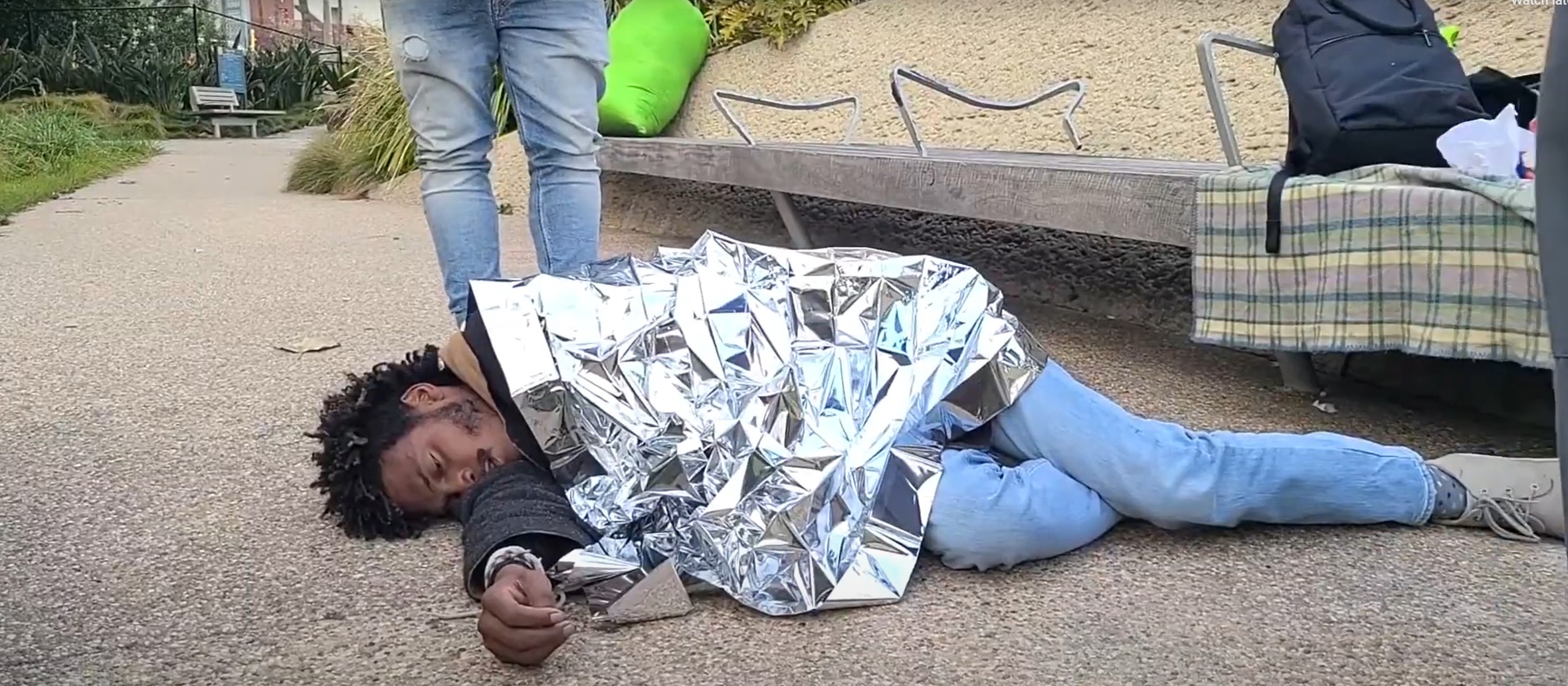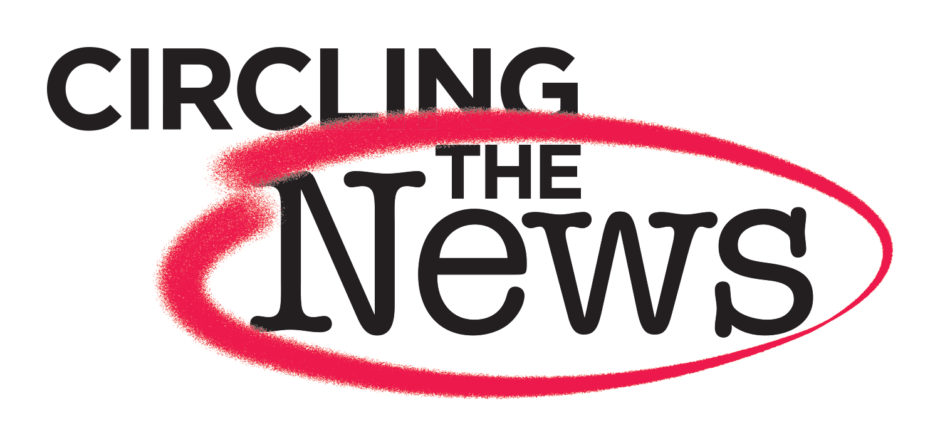
This person suffered a drug overdose in Tongva Park in Santa Monica. Photo: JOHN ALLE/SANTA MONICA COALITION
A reader said she was tired of hearing about the homeless in Los Angeles (amen, to that), with no one offering any solutions. This editor accepted the challenge and will examine the issue in three parts.
The first step to fixing homelessness, and cleaning up the City before the 2026 World Cup and the 2028 Olympics, is to stop lumping all people living on the street in the same category.
There are three broad categories of homeless: 1) drug/alcohol addiction, 2) mentally ill and 3) those who need help getting back on their feet. Each population needs to be dealt with individually.
PART 1 DRUGS:
If you know someone is an alcoholic, would you say, “Can I give you a gin and tonic?”
That’s what L.A. County is doing with Harm Reduction, enabling addicts, and keeping them on the streets.
As many as one-half to three-fourths of homeless have diagnoses of alcohol or other drug dependence. Rates of alcohol and other drug use disorders, and the social costs associated with untreated substance disorder, are higher among homeless than non-homeless persons, according to the National Institutes of Health.
L.A. County Department of Public Health Director Barbara Ferrer supports Harm Reduction. That is a program that focuses on non-judgmental addiction-aiding services delivered without preconditions.
“Here’s some needles, no questions asked.” Harm Reduction studies do not have data to show the program helps addicts get clean. The program also recognizes that many people are not willing or able to stop using substances.
About 3,220 people die from fatal drug overdoses in L.A . County every year – or about eight to nine people daily die from overdose. “The numbers are continually going up,” said Dr. Gary Tsai, director of L.A. County’s substance and Abuse prevention and control division.
L.A. County doesn’t help the addict get off drugs, which might kill him/her, instead it supplies drug paraphernalia. Harm Reduction does not stop usage; the only positive found in studies about that program notes that HIV transmission may be minimized.
The L.A. County budget for the Harm Reduction program jumped from $5.4 million in 2023 to $31.5 million in 2024.
Have another gin and tonic.
 How do addicts get their money for drugs? At least one prior user Jared Klickstein, who was homeless for nearly a decade – wrote about his experience in Crooked Smile: What It Took to Escape a Decade of Homelessness, Addiction, & Crime.
How do addicts get their money for drugs? At least one prior user Jared Klickstein, who was homeless for nearly a decade – wrote about his experience in Crooked Smile: What It Took to Escape a Decade of Homelessness, Addiction, & Crime.
“It’s a good way to show that there are people inside those bodies that right now are being governed entirely by addiction,” Klickstein added. “These people have souls, and they have value, but as long as they’re under the spell of horrific drug addiction and mental illness, their lives are basically being wasted, and it’s not right to just enable that sort of thing and sit back and [sit] on our hands.”
He wrote that while addicted he and another addict would take a bus to Santa Monica and rob supermarkets and drug stores and take part in property crimes.
When California passed Proposition 47, it reduced possession of illegal drugs from a felony to a misdemeanor and raised the felony threshold for theft from $400 to $950. Those that passed the Prop. felt that jail was not appropriate for drug addicts.
But before its passage, a person who was arrested for illegal drugs was given a choice of rehab or prison—and for many it was the push they needed to start getting clean. After Prop. 47 passage, participation in diversion programs, particularly drug courts, dropped over the past decade.
“If you give someone that’s addicted to fentanyl a free apartment, you just have fit an addict in an apartment, that’s all you have,” Klickstein said. “It’s not going to fix anything. In fact, a fentanyl addict sitting in an apartment is much more dangerous than a fentanyl addict sitting on the sidewalk, because this gives them a place to basically overdose with no one watching … I’m not against housing the homeless, I just want to house them in therapeutic communities that promote recovery from addiction and give them medical treatment for mental illness if they have any.”
Proposition 36, which will be on the ballot in November allows people who possess illegal drugs to be charged with a “treatment-mandated felony,” instead of a misdemeanor.
Specifically, this applies to people who (1) possess certain drugs, such as fentanyl, heroin, cocaine, or methamphetamine, and (2) have two or more past convictions for some drug crimes (such as possessing or selling drugs). These people would get treatment, such as mental health or drug treatment. Those who finish treatment would have their charges dismissed. Those who do not finish treatment could serve up to three years in state prison.
We need to treat the homeless who have drug addictions, instead of offering addiction accessories.
Could a family, whose child was addicted and died on the streets using paraphernalia from the County, sue the County for aiding in the death of a loved one?
Passage of Prop. 36 may force those with addictions to seek help.
If Los Angeles County Health Department could help those with addictions, instead of serving platitudes and needles, as many as half of the people living on the streets could disappear.
(Next up: Part 2 of the Solution.)


Brava!! Great analysis! Looking forward to Part 2.
KT
Superb, Sue! Keep up the great work.
And let’s get Hochman elected.
Sue this is a great series. Can you please provide a link or
reference to the statistics about the decrease in referrals to diversion programs? Trying to shine a light on unintended consequences of prop 47. Thank you!